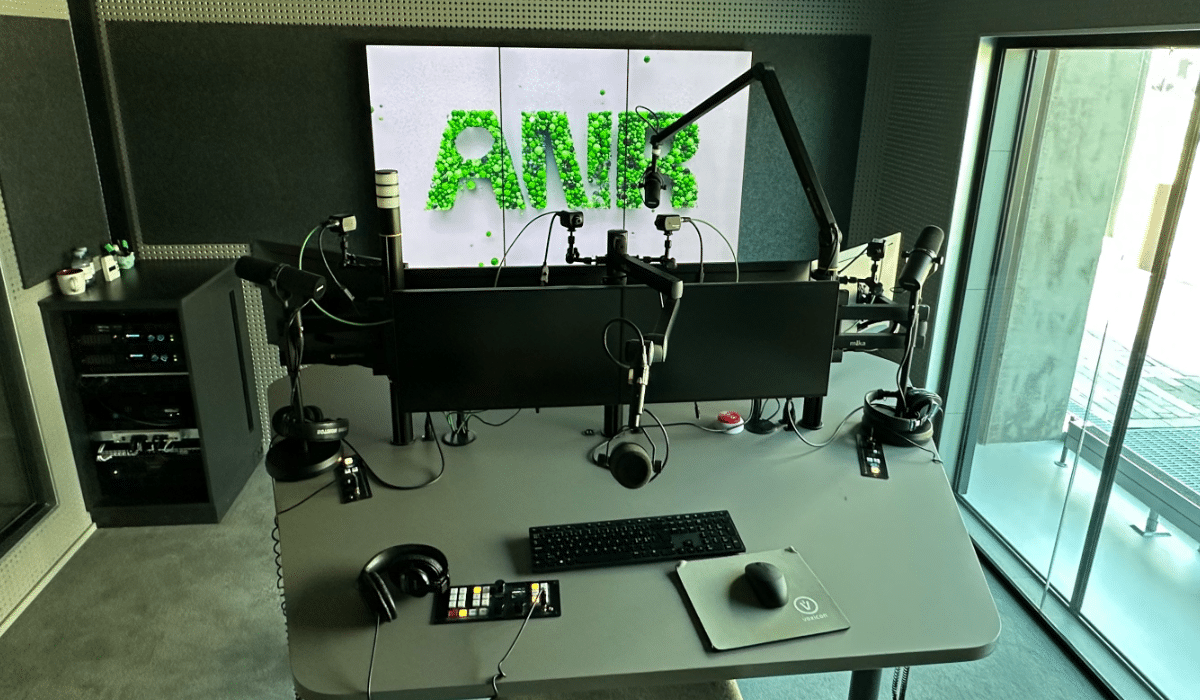NORTH JUTLAND, Denmark — Det Nordjyske Mediehus newspaper has served the Danish territory of North Jutland since 1781, preceding the telephone by almost a century. Radio hasn’t been around quite as long — ANR, one of DNMH’s radio brands, turns 40 this year. However, both newspaper and radio have seen unprecedented change over the past few years, calling for new ways of doing things, and in the case of the radio operations, a new digital studio facility.
Until recently, DNMH and ANR shared space in a large media house in Aalborg, Denmark. We operated our AC station Radio Nordjyske and Top 40 ANR station with a small staff of 10 people and a few freelancers on the weekend. So, when DNMH said it was time to move to a brand-new facility built for digital, it was a great opportunity to add some new efficiencies into our workflows.
We were already using Wheatstone’s WheatNet IP audio network, which had made it possible for our small staff to manage two stations. Radio Nordjyske and ANR together feed 37 transmitter sites across North Jutland and rely on WheatNet IP Blade I/Os for splitting and summing the correct commercial feeds to the respective destinations. It’s not uncommon for nine commercial splits at one time, all managed using the utility mixers built into the I/O Blades. Visual monitoring of all the audio sources running from the studios to the 37 transmitters is done in one screen capture using Wheatstone’s IP Meters software.
In the more than the 12 years we’ve been using WheatNet-IP, I’ve custom-designed touchscreen interfaces using Wheatstone’s ScreenBuilder tools for easily switching between the four studios and other tasks. At one point, we added a “studio-in-a-box” to handle live remote shows. This comprises a small E-1 console surface for mixing, an I/O Blade for routing sources and submixing and a Tieline Merlin codec (with built-in WheatNet-IP audio networking) for signal transport to the studio. Everything runs seamlessly on IP; no soundcards are needed. I occasionally join in on a Glass E virtual mixer app from my laptop to manage any issues remotely.
Cutting rackspace
For our new studios, we upgraded to four Wheatstone LXE console surfaces, a handful of talent stations, I/O Blades, streaming appliances and nine MP-532 multipurpose audio processors, with enough budget left over to add cameras, an Atem mini switcher, a Voceware vClock software clock and more. We cut our rackspace in half and lost hardware in the process, but we also added more tech, automated workflows and scope to the studios overall.
We were able to build on all the above by adding new split-frame LXE console surfaces to both on-air studios. LXE controls are programmable, which made it possible to change studios easily according to show, brand or talent; neither on-air studio is tied to a single brand, and both studios are interchangeable between ANR and Radio Nordjyske and any podcasts we produce.
For this new studio facility, I created even more customized touchscreens using the Wheatstone ScreenBuilder tool set.
We cut our rackspace in half and lost hardware in the process, but we also added more tech, more automated workflows, and more scope to the studios overall.
Added workflows
For now, we have three different screens running on the LXE console surface, one for each on-air studio to handle the studio switch and one to monitor the TOC for remotes or OBs. We’re using Glass LXE (for newsroom and track) — full virtual console surfaces with the same familiar interface as the fixed LXE console surfaces, but in a software application.
We needed to save rack space going from 14 racks to six. With Wheatstone’s MP-532, we got audio processing, RDS encoding and audio leaving as an MPX for the codec to the transmitters in our network. This alone meant we went from 36RU to 18RU.
We used ScreenBuilder touchscreens to bring in RCS Zetta playback with just a click on the screen and added Blades with high-density logic and I/O (LIO) to route and ultimately mix the program source (studio) and the commercial split playout from Zetta, as well as the occasional remote. This also loads the next show event, moves the faders up and fires off salvos that move the PGM bus on four or five utility mixers on the Wheatstone I/O Blades.
The same LIO extends to the vClock software and changes the media files running on our “brand screens” for a backdrop on videos in that studio, and “loads” the hybrid phone for that station onto faders on the console. Every time the mic fader is open on an LIO and the on-air light turns on, the Camera One system from Broadcast Bionics starts recording. It gets an audio feed from each microphone from that studio over AoIP, and the cut from camera to camera is based on sound levels read from the WheatNet IP. Throw “automix” from the LXE console surface on top of this, and you have a “journalist-safe” work tool to produce podcasts with video.
In addition to all the routing and logic built in, the great part about AoIP and digital is that everything can change with just lines of code. The best example of this is that we have a lot of “low” FM frequencies to cover our area. We ran into the limits of the AF list in the MP-532, but a software fix is on the way.
The WheatNet IP Streamblade appliance lets us provision streams as we need them, plus it gives us audio processing specifically designed for streaming. In addition, as stations in the EU are now using Kantar Media for PPM encoding, by the magic of software, the Streamblade will soon support that.
Overall, we were able to expand on our workflows and save space in the process.
The author is CTO of Det Nordjyske Mediehus|Radio
More stories about Denmark:
DPA Microphones wins Danish Sound Award
More stories about Wheatstone:
Z Ministries praises Wheatstone for remote

